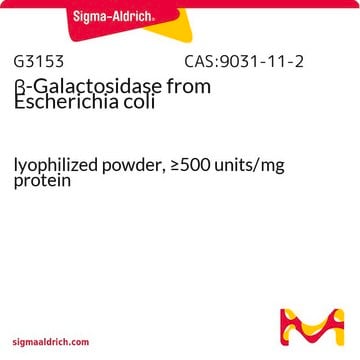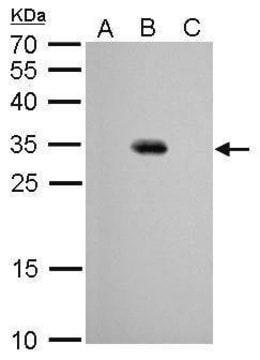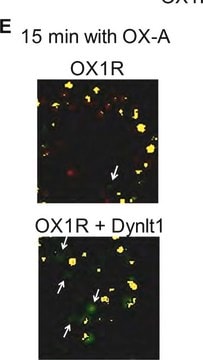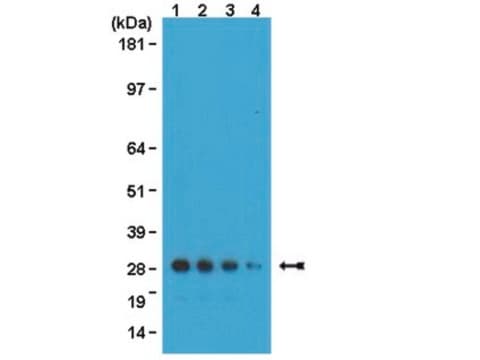G6539
Monoclonal Anti-Green Fluorescent Protein (GFP) antibody produced in mouse
clone GFP-20, ascites fluid
Sinônimo(s):
GFP Antibody - Monoclonal Anti-Green Fluorescent Protein (GFP) antibody produced in mouse, Gfp Antibody Sigma, Gfp Monoclonal Antibody
About This Item
Produtos recomendados
fonte biológica
mouse
Nível de qualidade
conjugado
unconjugated
forma do anticorpo
ascites fluid
tipo de produto de anticorpo
primary antibodies
clone
GFP-20, monoclonal
peso molecular
antigen 27 kDa
contém
15 mM sodium azide
embalagem
antibody small pack of 25 μL
técnica(s)
dot blot: suitable
indirect ELISA: suitable
western blot: 1:2,000 using purified recombinant GFP preparation
Isotipo
IgG1
Condições de expedição
dry ice
temperatura de armazenamento
−20°C
modificação pós-traducional do alvo
unmodified
Descrição geral
Imunogênio
Aplicação
Exoneração de responsabilidade
Not finding the right product?
Try our Ferramenta de seleção de produtos.
produto relacionado
recomendado
Código de classe de armazenamento
12 - Non Combustible Liquids
Classe de risco de água (WGK)
WGK 3
Ponto de fulgor (°F)
Not applicable
Ponto de fulgor (°C)
Not applicable
Certificados de análise (COA)
Busque Certificados de análise (COA) digitando o Número do Lote do produto. Os números de lote e remessa podem ser encontrados no rótulo de um produto após a palavra “Lot” ou “Batch”.
Já possui este produto?
Encontre a documentação dos produtos que você adquiriu recentemente na biblioteca de documentos.
Os clientes também visualizaram
Nossa equipe de cientistas tem experiência em todas as áreas de pesquisa, incluindo Life Sciences, ciência de materiais, síntese química, cromatografia, química analítica e muitas outras.
Entre em contato com a assistência técnica














